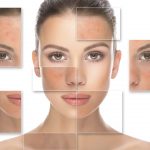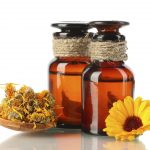What Exactly Is Rosacea And How Can You Treat It?
Are your cheeks, chin, nose and T-section a little redder than normal? Well, if this is the case, then you may have something called ‘Rosacea’.
Rosacea is a poorly understood long-term skin condition which usually effects the faces of women in their 30’s who have a pale skin tone. Not only can it effect the face, but it can occasionally occur on the neck, back of the head, scalp and even on the chest. Rosacea can appear constantly or it can flare up.
 Rosacea is a concentration of small red bumps, spots and blood vessels which become visible on the surface of the skin. Many of the symptoms of Rosacea can be comparable to acne, allergic skin reactions and even eczema, which can lead to a misdiagnosis. It is quite important to get a proper diagnosis when the first symptoms occur, so seeking the advice of a professional such as a dermatologist is extremely important. If Rosacea is left untreated then it can get worse and affect your daily life.
Rosacea is a concentration of small red bumps, spots and blood vessels which become visible on the surface of the skin. Many of the symptoms of Rosacea can be comparable to acne, allergic skin reactions and even eczema, which can lead to a misdiagnosis. It is quite important to get a proper diagnosis when the first symptoms occur, so seeking the advice of a professional such as a dermatologist is extremely important. If Rosacea is left untreated then it can get worse and affect your daily life.
In spite of the fact there is no cure for rosacea and that there is no known reason for this skin condition to happen, there are treatment options available. Depending on the severity of your symptoms, dermatologists often prescribe both oral antibiotics as well as topical creams which can be applied directly to the affected area
. If your symptoms are more severe, then there are other treatments available such as the ‘Nuriss Rosacea Rescue Facial Treatment’ which begins with a skin consultation where a ‘Visia skin analysis can be undertaken, to assess the skin in depth,’ says our Dr Anita. The skin care professional will then discuss the various options with you as well as the length of your treatment. One option available is laser therapy, which helps to reduce the size of the visible blood vessels and can reduce the extensive redness on the surface of the skin.
There are ot her, simpler treatments which include identifying the ‘causes’ of your flare-ups. The majority of women who suffer with Rosacea, believe that once they have identified what triggers it, they become aware and can avoid it and therefore reduce the symptoms. There are quite a number of common triggers, these can include; spicy food, alcohol, concentrated skin care products, stress, heat, water, sun and even lack of sleep. The best way to see what brings out your Rosacea is by keeping a diary which can include your daily food intake, daily activities and what in particular has affected your skin. This information can help you shed some light and help you to know what to avoid.
her, simpler treatments which include identifying the ‘causes’ of your flare-ups. The majority of women who suffer with Rosacea, believe that once they have identified what triggers it, they become aware and can avoid it and therefore reduce the symptoms. There are quite a number of common triggers, these can include; spicy food, alcohol, concentrated skin care products, stress, heat, water, sun and even lack of sleep. The best way to see what brings out your Rosacea is by keeping a diary which can include your daily food intake, daily activities and what in particular has affected your skin. This information can help you shed some light and help you to know what to avoid.

Your daily skin care routine can also affect the signs of Rosacea, so make sure you use natural products which contain ingredients such as; calendula, arnica, marshmallow grain oil and chamomile. Be aware of what you put on your skin, test your products on your neck to prevent a flare-up on your face. If you do have a reaction, then be sure to write down the ingredients and try something different.
Remember, by using medication, avoiding chemicals and ingredients that cause flare-ups and by changing your daily routine, you can reduce the symptoms of Rosacea.

